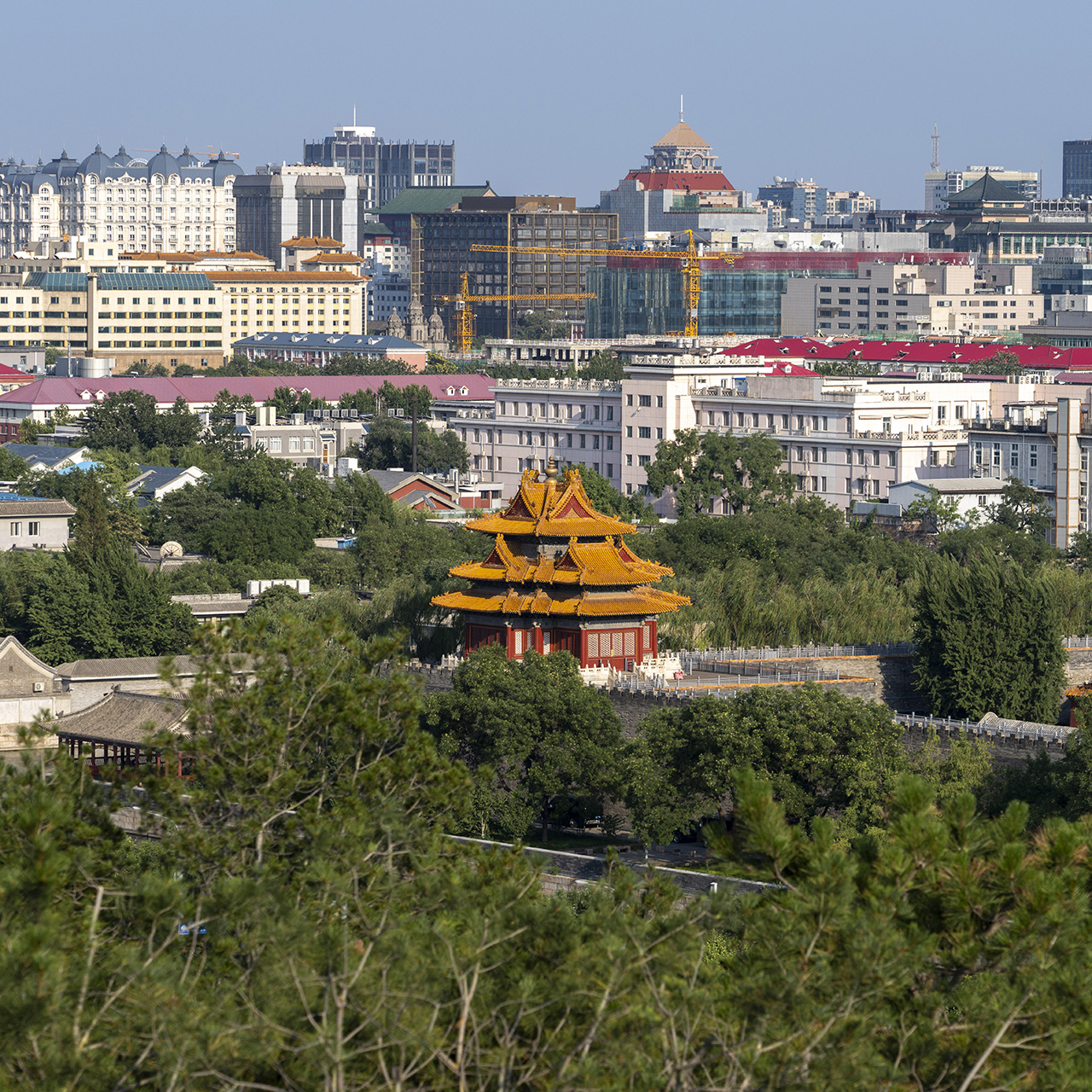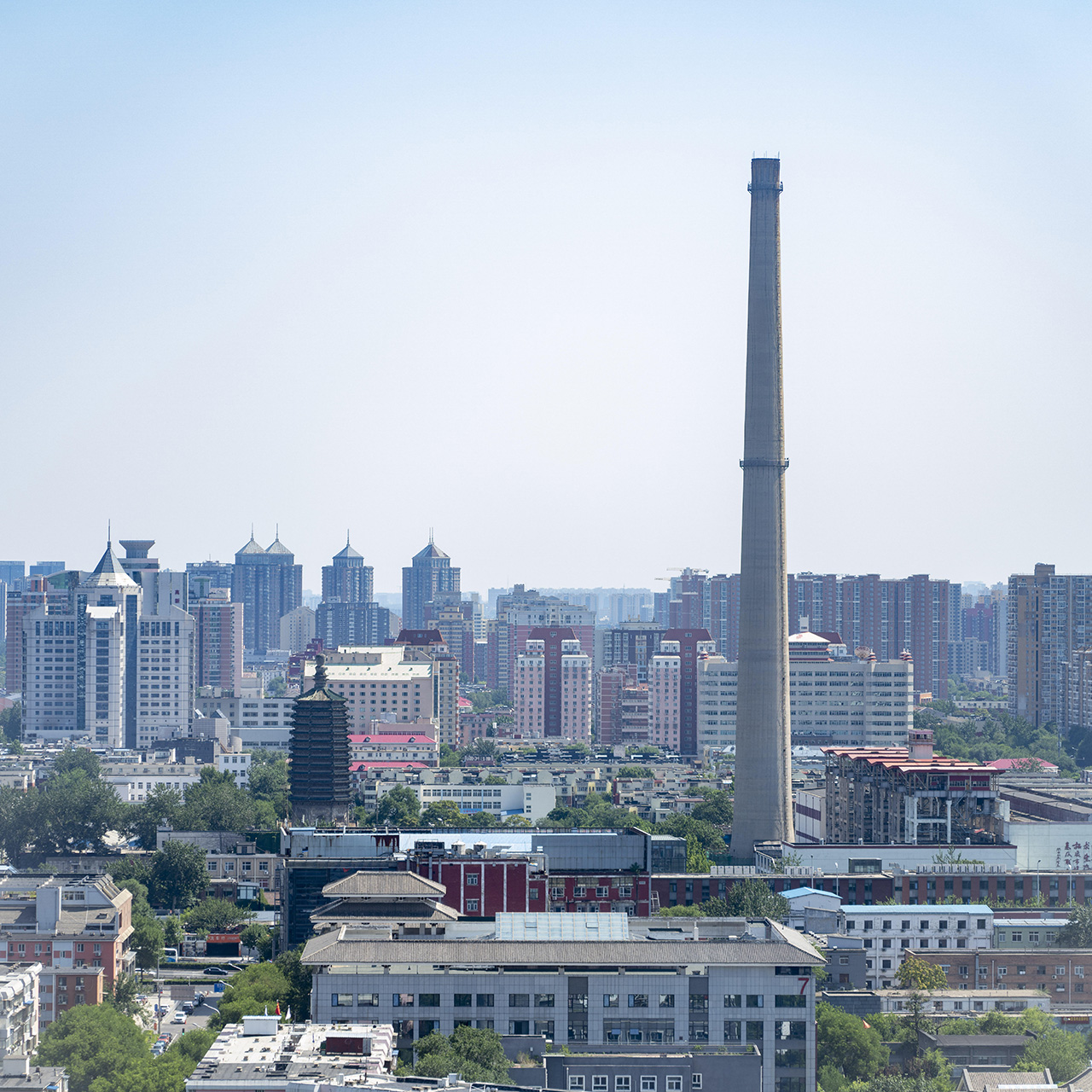
A new generation of contemporary Chinese artists is speaking their truth to the world by combining the ancient with the modern. They're taking on topics like colonialism, pollution and the collision of religion and commerce through a variety of forms of expression. For these artists, who choose to live and create in Western countries, their work is a way of representing cultures and eras in conflict.

London artist Cong Yunfeng combines cutting-edge information technology with ancient themes in his “Binary Landscape” series, in which he hand-paints the zeros and ones of binary code to form ink landscapes on silk scrolls. At first glance, this is just an ordinary Chinese ink painting. But underneath the seemingly familiar images, there is a perceptual encoding transformation mechanism. The motivation is no longer to recreate what ancient mountain landscapes look like, but to make the viewer aware of the absolute difference between old and new. “Binary code serves as the fundamental building block of the digital world, and its resemblance to the Yin and Yang diagrams in the Chinese I Ching is a fascinating coincidence,” said Cong. “The philosophy of Yin and Yang forms the underlying logic of Chinese culture. I want to explore the world through a ‘coding-decoding’ approach.”
“Artists who create using Chinese cultural elements abroad often play the role of translators, helping the audience understand the context of the work,” Cong continued. “Many elements in my work are cultural symbols for those familiar with Chinese culture, while for those from different cultural backgrounds, they may only see an image.” His deep understanding of the Western visual system made him comfortable with this process of cultural exchange.
The experience of studying in the U.K. influenced Cong’s desire to promote and preserve Chinese culture on a wider level. In 2014, he entered the Prince’s Foundation School of Traditional Arts in London to study traditional arts, becoming the first mainland Chinese student at the school. During his time there, he took more than a dozen courses in two years, including Islamic geometry, Persian miniature painting, Indian miniature Painting, Medieval portraits, gilding, and ceramics.
In July, Cong visited the “China’s Hidden Century” exhibition at the British Museum. Despite showcasing exquisite Chinese art, the show caused much controversy on Chinese social media. Among the causes of the furor, the curators made unauthorized use of writer and translator Yilin Wang’s translation of a poem by Chinese revolutionary Qiu Jin . And the exhibition used a portrait of Lady Li (Lu Xifu’s wife) from 1876 as their official promotional image. Cong said “the artwork on the promotional posters appeared stiffand lacking vitality, conveying Western stereotypes and outdated aesthetics about China.”
Cong added that “the perspective in ‘China’s Hidden Century’ seems more like a top-down examination, highlighting the condescending stance of former colonial powers with their ’sun never sets' mentality as they looked down upon the colonized nations.” While Cong criticizes what he calls, “the theft and plunder of tangible cultural artifacts,” he sees positive outcomes to the controversy. “The deep discussions and critiques on social media make me feel that the younger generation in China is no longer willing to passively wait for scrutiny,” said Cong. “They exhibit a desire to shift perspectives and assert their narrative authority, actively raising their voices to make the world understand China’s stories.”
Cong’s reaction to the British Museum’s exhibition accelerated the completion of his work “Conversion of the Five Hundred Bandits.” The work is part of his “Wall-facing Project,” which aims to reflect on the current state of multiculturalism in the context of globalization.
Leake Street is a place in London where graffiti is legal and British artist Banksy once hosted a festival. Cong used graffiti to recreate ancient Chinese temple murals, creating the effect of multicultural collision and conflict. With care and respect for the local community, Cong visited the area several times before creating his work, conducting extensive research in order to understand the local history and culture.
“Conversion of the Five Hundred Bandits” was inspired by the Dunhuang murals of China’s Western Wei Dynasty (535-557). Cong transformed the original image and added metaphors to both the image and the text. For example, he replaced the faces of robbers with characters from Michelangelo’s “Last Judgment,” and added texts adapted from Buddhist classics and Western classical works, removing scenes in the original in which robbers listen to Buddhas and practice on mountains.
“Conversion of the Five Hundred Bandits” is a work of sharp perspective that uses a method akin to historical pop art. He chose anecdotes from Chinese history that resonate with contemporary Western themes, placing them in a completely new cultural context. This combination of historical anecdotes and everyday life, combined with popular culture, aims to find similarities between the past and the present.
“Reverse Pipa,” another entry in the “Wall-facing Project” series, is milder. When Cong was conducting research on Leake Street, he often encountered dancers, so he chose a symbol from traditional Chinese culture that would resonate with the dance and music scene. “Reverse Pipa” is inspired by a musician on a mural in the Mogao Grottoes of Dunhuang, which dates back to the Middle Tang Dynasty (618-907).The original “Reverse Pipa Dance” shows a musical performance by Heavenly Masters performed in the Heavenly Palace in Chinese mythology. In Cong’s version, masters dance in the Heavenly Palace, playing harmonious melodies, while below the arch, people from different backgrounds and age groups perform spontaneous secular dances. The Pipa player resonates with the festive atmosphere throughout the graffiti tunnel and seems to engage in a transcendent dialogue across time and culture.
Cong used a scissor lift to complete the mural on the 23-foot-high arch on Leake Street. Cong worked on the ceiling painting more than five hours a day pushing the limits of his body. Here, as in his other work, Cong presents cultural symbols of different civilizations in the form of murals and graffiti in public spaces, creating a mix of fusion, collision and conflict.
With the growth of industry and increasing population density in modern China, environmental pollution is becoming more and more serious. Kun Zhao, a Chicago artist originally from Shijiazhuang, China is combining cast-off plastic and other materials associated with environmental pollution with traditional forms of painting depicting the beauty of nature. 10 million people living in toxic smog caused by industrial pollution emission, coal burning emission, dust, vehicle exhaust and the migration of foreign pollutants.

In Zhao’s “Plastic bags and Chinese color on paper” series, she uses discarded blue plastic bags to imitate “Shan Shui” (Chinese landscapes) in Chinese ink paintings. The sentences printed on the plastic bags are cut out and pasted next to the landscape to imitate the verses in traditional ink paintings. At first, she thought the fake “verses” looked strange because the original words read: “Don't put on children’s heads to avoid suffocation.” Later, on the advice of Peter Power, her advisor at the Art Institute of Chicago, she shuffled the original text to make it unreadable.
Zhao’s work echoes the landscape paintings of the Chinese Four Masters of the Yuan dynasty.
“In different times, there are always artists who use their work to speak for the times and society from an artistic point of view. These people and works add up to tradition.” Zhao said. “However, tradition should not just be a product of a bygone era, it can also be a living thing, a rejuvenated thing, a spiritual thing. Artists should not fail to honor their predecessors as gods, should not strive to imitate styles that are ‘dead’, and should not only pursue superior skills.”
For as long as Zhao can remember, she watched her artist father create paintings and write brush characters. Today, her home is filled with calligraphy and paintings. Before moving to Chicago, she studied Chinese painting as a university student. While studying at the Art Institute, Zhao discussed with teachers and students how to incorporate traditional Chinese art into her work, telling them about the beauty of rice paper, brush, ink and other traditional painting materials. She also analyzed with them the differences in techniques and ideas between Chinese and Western painting.

Zhao is also concerned about women artists in China. “Although the situation for female artists has improved now, there is no denying that women face more obstacles in employment and personal development.” Zhao continued. “I hope there will be more exhibitions and reports of female artists in the future, expanding the voice and influence of women in all aspects of art and social life.”
Ethan Li is currently studying for a master’s degree in photography at the Pratt Institute in New York. In his work “The god of Business,” he photographed a series of religious buildings in the center of some large cities in China. Traditional religious buildings are seen surrounded by countless skyscrapers, which stand in stark contrast to their classical architectural style. Li reverses the bottom-up perspective from which people usually observe religious buildings, and instead chooses to shoot from high places and far away, reducing the sites’ proportion in the picture and weakening their sense of majesty. “My work describes the high degree of integration of commerce and religion in modern society and their interpenetration and mutual influence.” Li said.

When Li was young, he visited Buddhist temples with his grandparents. He saw monks reciting scriptures in the temple and praying for the pilgrims. These scenes gave him the first vague concept of religion. At age 17, Li came to the United States, where he completed his studies at a Catholic high school in Syracuse, New York and Saint Michael’s College in Vermont. While in college, he was introduced to Taoist divination. Since then, Li began to incorporate religious elements into his works.
On a trip back to China, Li found that almost all the temples he visited had been commercialized. Visitors need to buy a ticket to enter, and if they want to burn incense to worship the statue, they had to buy it. Inside most Taoist temples, there were shops selling various kinds of crystal jade and ornaments that are said to bring good luck to people.
“Religion has to be commercialized to a certain extent for it to stay alive,” Li said. Yet despite charging visitors, many religious buildings have never fully been restored to their ancient appearance.
Li strives to express the balance between the “good and bad” that this commercial model gives to religion. Taoism advocates that human beings, society and nature should maintain a harmonious balance. In his work, Li has been using his art to find a perfect balance between religion and commercialization. “In the future China, with the development of science and technology and the progress of society, if Chinese religious culture wants to find a way to survive in the ever-changing society, it must adapt to the random changes of the outside world.” Li said.

Zhao believes that art should be integrated with society and life. Art is a product of its times. “Traditional Chinese culture is a culture that goes deep into the bones of Chinese people,” Zhao said. “Cultural tradition is a cultural gene that nourishes the soul of the Chinese people. It is a cultural imprint that cannot be erased.”
By integrating traditional Chinese culture with contemporary art, these artists deeply and delicately reflect the multifaceted nature of society and the challenges of change. These works of art are both a tribute to tradition and a profound reflection on modern social issues.
Produced by candidates for the MS degree in the Media Innovation & Data Communication program at the Northeastern University School of Journalism. © 2023
